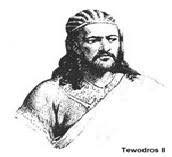Hair Style as an Expression of Ethiopia's Culture
We all know that hair is more than a physical feature—it is a living
expression of culture, identity, and heritage. In Ethiopia, many contemporary
hairstyles go far beyond fashion statements; they are deeply rooted in our
history and tradition. These styles are not just trends—they are testimonies of
who we are, and where we come from.
A quick two-hour journey in any direction—north,
south, east, or west—reveals the diversity and cultural depth of Ethiopian
hairstyles. From highland villages to urban centers, you’ll witness intricate
braiding patterns that carry stories passed down for generations.
Among the many cherished styles, one continues
to stand the test of time with grace and pride: shuruba.
Shuruba is
a traditional hairstyle made of tightly braided plaits that run along the scalp
and often extend freely at the shoulders. Though it originated in northern
Ethiopia, shuruba has long transcended
geography. Once worn by both men and women, it remains a beloved and widespread
style across the country, occasionally enhanced today with hair extensions or
adorned with beads and embroidery.
This iconic hairstyle has graced the heads of
Ethiopia’s nobility. Emperors like Tewodros and Yohannes, and legendary figures
such as Empress Taitu, wife of Emperor Menelik II, were known to wear braided
hairstyles—including shuruba—as symbols
of dignity and power. Today, Ethiopian women—and even a few stylish young
men—continue this tradition, wearing shuruba
with pride, elegance, and a sense of connection to their royal lineage.
Whether woven tightly or flowing freely, shuruba has never lost its power as a symbol
of Ethiopian pride and patriotism. Fashions may come and go, and throughout
history societies have imitated fleeting icons of popular culture. But what’s
remarkable about shuruba is its staying
power. More than just a hairstyle, it has become a cultural constant—forever
fashionable, and proudly Ethiopian.





Comments